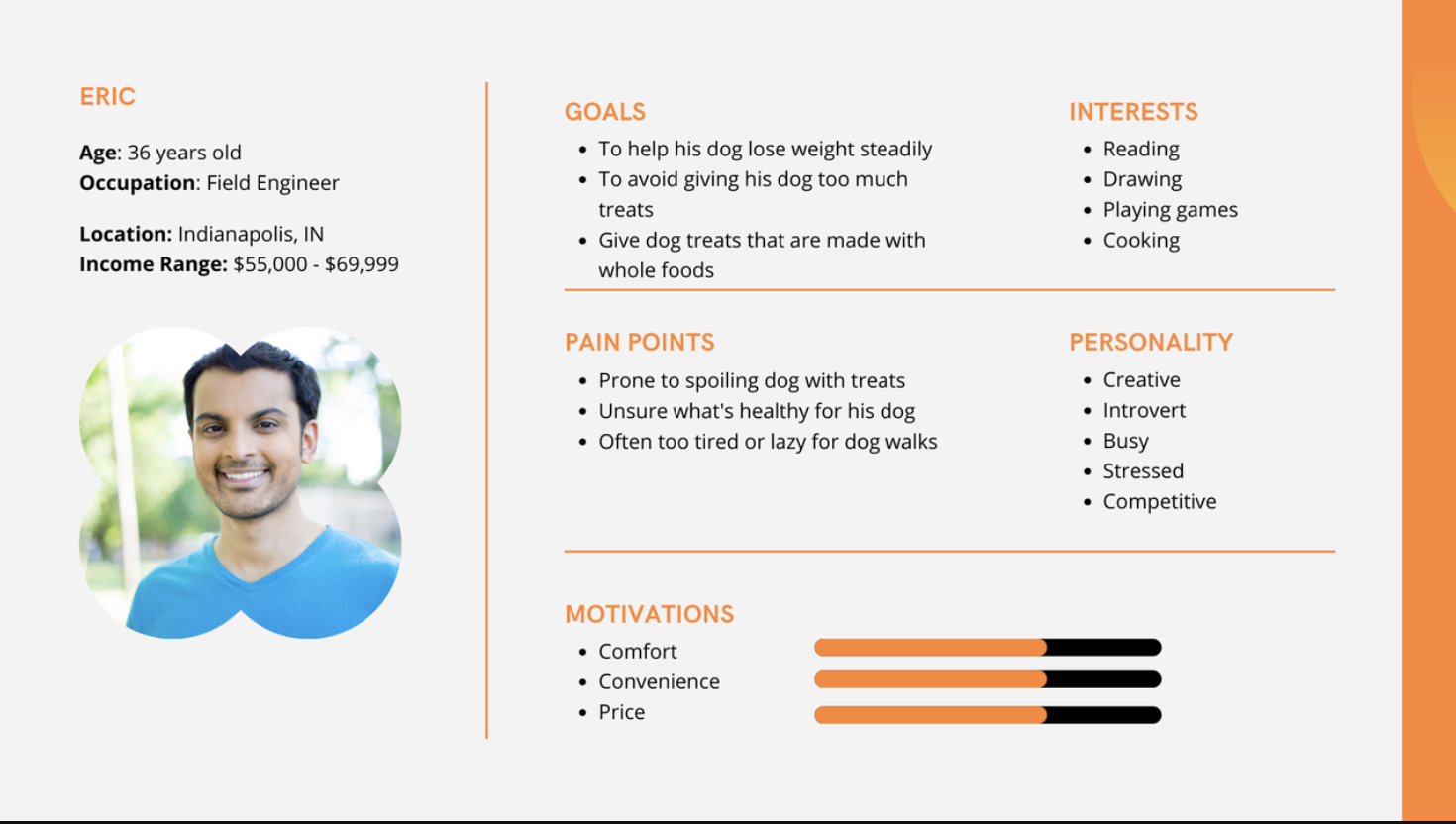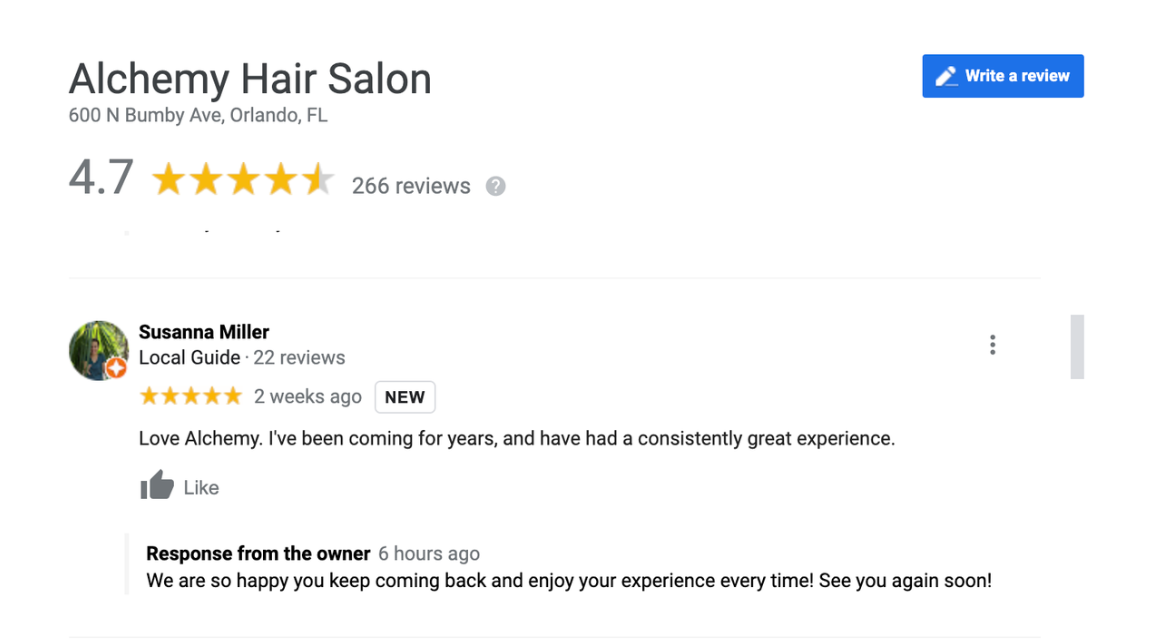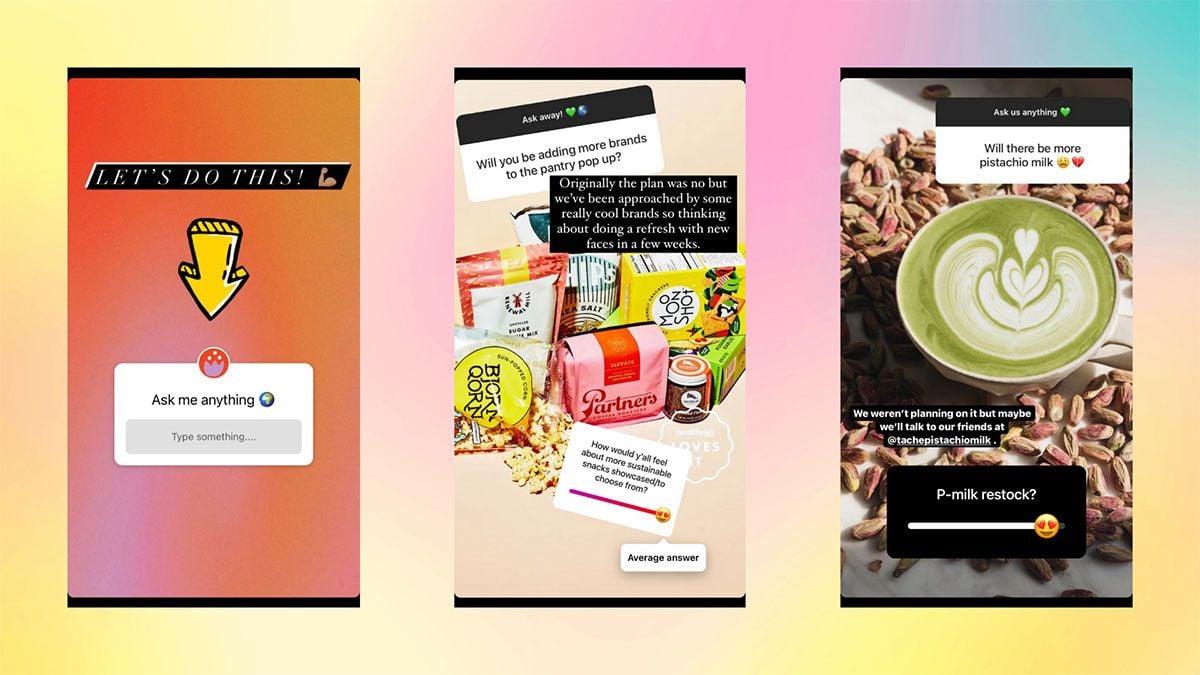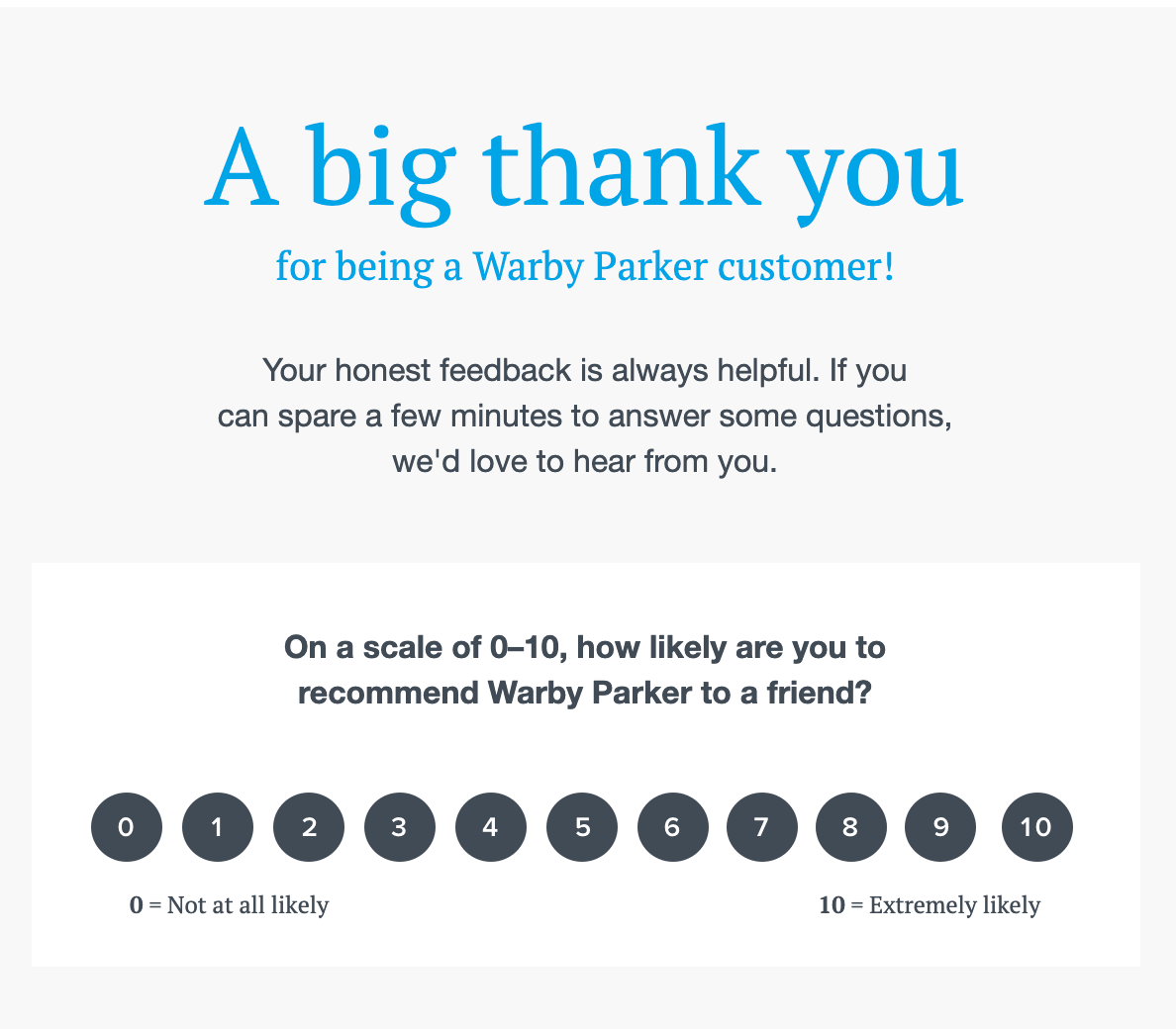Market research is the process of organizing information about your target audience. It’s the single most important thing you can do to attract and delight customers, launch high-value products, and maintain a competitive edge.
But, when you’re a small business owner, you’re juggling so many responsibilities that market research gets put on the backburner. Big businesses spend months and huge budgets to understand their customers, but small business owners have to be thriftier to understand their customers without access to big-budget resources.
In this guide, we break down exactly how you can conduct market research to grow your small business with minimal investments in time and budget.
Define your buyer personas
A buyer persona is a fictional, descriptive profile used to target people most likely to become loyal customers. Buyer personas tell you who your customers are, their interests, behaviors, and spending patterns. Understanding your customers as humans and not just a set of data helps you to create content and messaging tailored to their specific needs.
For example, if you own a dog food company, your buyer persona might highlight someone named “Eric.” Eric is 36 years old and works as a field engineer in Indianapolis. He wants to keep his dog healthy, but his job is stressful and time-consuming, so he doesn’t have a lot of time to take his dog on walks. Eric needs to buy dog food he can trust to be made with whole foods, tastes good to his pet, and is affordable for his income level.

Even though the person in your buyer persona isn’t real, you want to treat them as a model customer. Give them a name, and add details about their life like age, location, interests, and buying behaviors. If it’s helpful, you can also find a stock photo of a person who embodies your ideal customer as a handy visual. Be sure to include common pain points faced by your persona, so you can determine any niche markets your product can fill.
Aim to keep your buyer personas limited to no more than five. Having more than one type of buyer persona is perfectly fine, but it's important you’re realistic about who you're able to effectively reach when developing a marketing campaign.
Analyze your competition
Competitor analysis is an exercise in unpacking who your top competitors are and what makes them successful (or not successful) in engaging with your potential customers. Understanding the ways other businesses are successful will help you make informed decisions and identify ways you can outperform the competition.
Conducting a competitor analysis involves a little bit of research. Get started by identifying both local and online businesses that compete with your own. Comb through their website and other marketing channels to examine their customer-facing experience, taking a close look at:
- Website performance: Do the pages load quickly? Is it easy to navigate?
- Social media platforms: How do they engage with their followers?
- Pricing structure: How much do they charge for products and services? Are their prices appropriate for the audience?
- Reviews: How do their customers feel about them? Keep in mind businesses with higher reviews are your stronger competitors.
Gather information about your competitors with our Competitor Analysis Google Sheets template, using it to pinpoint trends and see comparisons between businesses.
Ask your most loyal customers what they love about your business
One valuable way to learn what’s working, or not working, among your most valuable customers is to go straight to the source: the people who are already buying from you. These are the people who embody your ideal customer base. We’re willing to bet these customers also look a lot like one of your buyer personas.
Luckily, with the advent of social media and digital technology, it’s easy and cost-effective to talk with customers directly.
Ask for customer feedback with surveys
Businesses that collect feedback make more informed decisions because they’re able to address the biggest issues that impact their customers. A recent SurveyMonkey study found 83% of small businesses that self-identify as “successful” measure customer satisfaction.
Use a survey software like SurveyMonkey to follow up with customers after they make a purchase. Keep your surveys short and simple — between 5 and 10 multiple choice or short answer questions. Always follow up with negative respondents to offer a solution.
Read customer reviews
Online reviews are powerful ways to build customer trust. Data from ReviewTrackers shows that 94% of consumers will decide to not engage with a brand after reading a negative review, making a convincing argument to stay on top of your positive and negative reviews.
Check online reviews once or twice a week to stay in control of your online reputation. Respond to positive reviews to thank happy customers for supporting your business, and respond to negative reviews to resolve issues if possible. Always offer an apology for a bad experience regardless of whether the problem is solvable.
Four websites control about 88% of all online reviews: Google, Yelp, TripAdvisor, and Facebook. If you have a Google for Business account, you can reply to reviewers, but keep in mind your response will be public.

Use social media to talk with your audience directly
Social media marketing lets businesses connect directly with their audience. It’s a free way to build a brand, generate sales, and drive tons of traffic to a website using engaging content.
Instagram makes it easy to connect with your audience with interactive features designed for Stories like stickers, question prompts, and quizzes. Use these features to talk to your followers, asking them to weigh in on your products and services. For example, if you’re a skincare company and you want to pick up a new vendor, use a Question sticker to ask your followers what their favorite product is. Your followers can introduce you to new brands you may not have considered before.
Goldune is a new sustainability company that sells products to environmentally conscious consumers. Even though Goldune has only been around for about one year, they’ve grown a strong community-based following thanks to their crowd-sourced approach to social media. Goldune has become a master at leveraging Instagram Stories to learn from their followers about the products they carry and brands they should work with.

Calculate your Net Promoter Score (NPS)
Your Net Promoter Score, or NPS, is a metric you use to gauge the overall quality of your customer experience and understand how customers feel about your business. You can calculate NPS by gathering feedback from your existing customers about their likelihood to recommend your products.
It’s a common practice for businesses to survey their customers via email after making a purchase. For example, say you recently purchased a pair of eyeglasses online from Warby Parker. In the confirmation email for that purchase, they ask you, “On a scale of 0–10, how likely are you to recommend Warby Parker to a friend?” Your numerical response helps Warby Parker calculate their NPS, giving them a snapshot of your customer experience.

To calculate your NPS, create an email survey for your customers to send out after each purchase. Once you’ve collected responses, tally the answers into the following categories:
- Detractors: Those with a score between 0 - 6
- Passives: Those with a score between 7 - 8
- Promoters: Those with a score of 9 -10
Next, subtract the percentage of the detractors from the percentage of the promoters (passives aren’t used for NPS). The answer is your NPS.
Total % Promoters – Total % Detractors = Net Promoter Score (NPS)
For example, if you have 20% of respondents who are detractors and 60% who are promoters, your NPS would be:
60 - 20 = 40
Your NPS can range between -100 and 100. In an ideal world, you want your NPS to be as close to 100 as possible.
Remember, NPS is simply an indicator of your overall customer experience. So, a high score means your customers are generally pleased with your products and services — and the opposite goes for a low score. Improve your NPS by reaching out to passives and detractors to ask them about their experience and how you can do better.
Pull all your data together into a market research report
Data without analysis is totally useless to you. That’s why we recommend pulling together your findings into a document that summarizes your research and highlights action items.
A market research report lets you organize your buyer personas, competitor analysis, customer feedback, and any additional findings into one simple document.
We recommend following a basic outline:
- Executive Summary: Include an introduction that gives a high-level view of the report and your findings.
- Background: Explain the goals of your research and the methods you used to collect data.
- Buyer Personas: Include an introduction that explains how you came to develop your personas and why they’re relevant to your brand.
- Key findings from competitor analysis: Pinpoint trends, like similar price points for products or strong social media presence across multiple companies. You can also identify gaps in the market your business can fill.
- Key findings from customer outreach: Look for trends in customer feedback, like customers wanting a faster response time or wanting a discontinued product to come back in stock.
- Next steps and recommendations: Call out any action items that can inform your marketing strategy.
This format will help you make the most of your market research and let you create a tactical plan to reach your ideal customers.
Use market research to grow your small business
After you’ve uncovered major discoveries about your customers and what they want, apply what you’ve found to your marketing channels.
You can always tweak language on your website, update branding materials, and rework content — but one of the easiest things you can do is create a simple website with Buffer’s new Start Page tool. Start Page is a great interim tool you can use while you overhaul your actual website, so you never have any downtime. If you don’t have a website yet, Start Page is a clean, easy-to-use, and customizable option to get you started.




